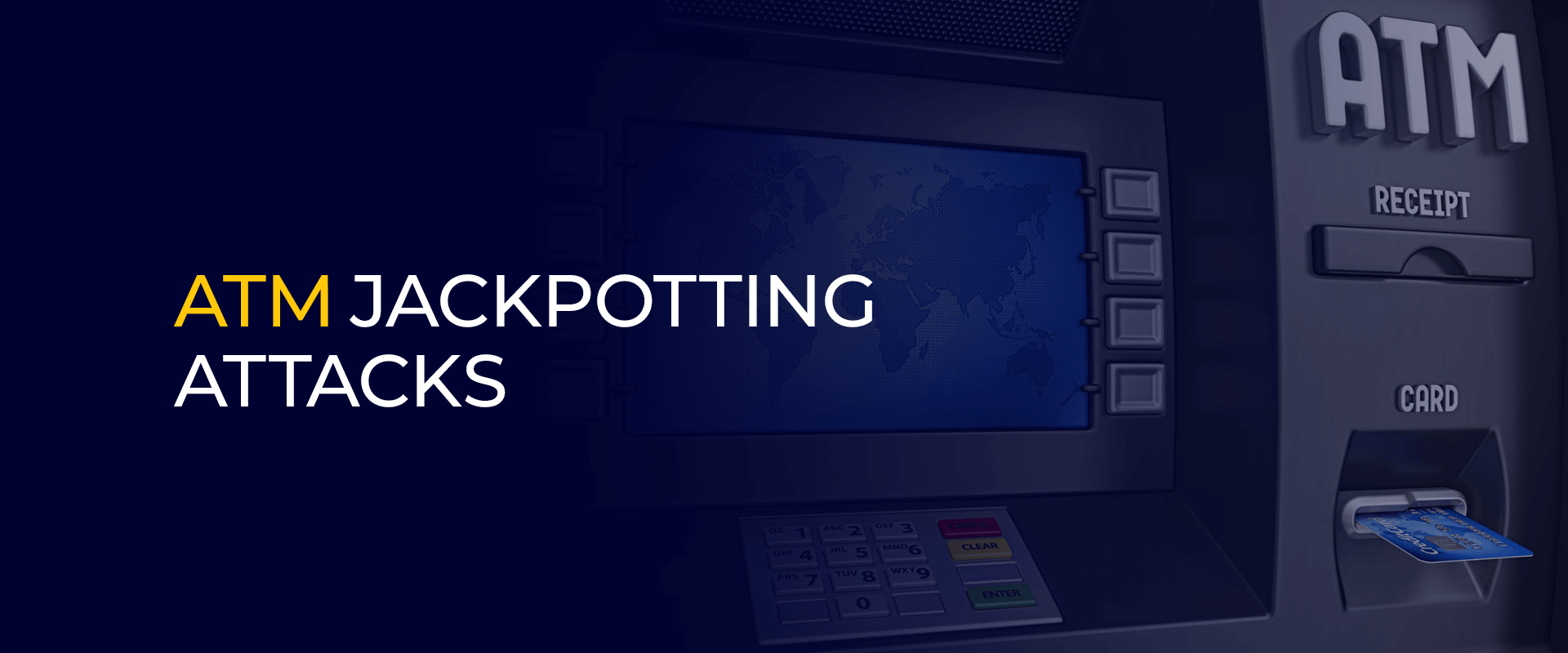

Get 93% OFF on Lifetime
Exclusive Deal
Don’t miss out this deal, it comes with Password Manager FREE of cost.
Get 93% off on FastestVPN and avail PassHulk Password Manager FREE
Get This Deal Now!By Christine Margret No Comments 6 minutes
ATM jackpotting is a form of cybercrime where criminals illegally extract cash from ATMs. Unlike the dramatic scenes in movies, jackpotting doesn’t involve physical violence or ripping ATMs out with cars. Instead, attackers use various techniques, including malware or hacking, to manipulate ATMs into dispensing cash. These attacks exploit vulnerabilities in ATM software or hardware, allowing criminals to access and control the machine remotely, resulting in unauthorized cash withdrawals. To find out more about it, refer to the details below.

Note: When conducting online banking, always use a VPN to safeguard your data. A VPN encrypts your internet connection, protecting sensitive information from potential threats. This ensures privacy and security, reducing the risk of cyberattacks and unauthorized access to your financial details
ATM jackpotting is a sneaky cyberattack that hackers use to make ATMs give out all their cash. They find weaknesses in the machines and exploit them. The aim is to take all the money from the ATM, which isn’t linked to anyone’s bank account. Hackers usually target ATMs outside banks or in shops. They might dress up to look like they belong there, so no one suspects anything while they’re tampering with the ATM.
ATM jackpotting attacks involve gaining physical access to the ATM and using a rogue device, such as a portable computer, to execute the attack. The attackers access the internal computer of the ATM, remove the hard drive, and uninstall any antivirus software present. This allows them to install their malware, replace the hard drive, and reboot the ATM. The entire jackpotting operation usually takes less than a minute, allowing the attackers to quickly exploit the ATM and extract cash.
ATM jackpotting attacks come in various forms, but two primary tactics are commonly employed by cybercriminals:
In this method, cybercriminals gain physical access to the internal computer of the ATM using specialized keys or surgical tools like endoscopes to locate connection ports. To avoid suspicion, they often disguise themselves as ATM technicians. Once inside, the attackers insert a USB device infected with malware or remotely execute malware via smartphones. This malware is then activated using the ATM’s keyboard or SMS messages. Once activated, the malware instructs the ATM to dispense cash from the cash dispenser. The attackers rely on individuals known as money mules to collect the cash from the hacked ATMs, completing the illicit transaction.
In a black box attack, criminals first gain access to the ATM’s computer dashboard and switch it to supervisor mode, which grants them control over the machine’s operations. They then connect a rogue device, often referred to as a black box, to the ATM. This rogue device is designed to mimic the ATM’s internal computer and take over the cash dispenser while keeping the ATM operational for customers. Criminals control the black box wirelessly using a smartphone, sending commands to withdraw cash from the ATM’s cash dispenser. Once the maximum amount of cash is withdrawn, the hacker simply disconnects the black box, leaving no evidence behind of the illicit transaction.
Preventing ATM jackpotting attacks requires a combination of vigilance and proactive measures to safeguard against potential threats. While customers may not always be able to fully protect their bank accounts from ATM fraud, following these simple tips can help minimize the risk:
By staying vigilant and implementing these preventive measures, individuals can reduce their vulnerability to ATM jackpotting attacks and help safeguard their financial assets against fraudulent activity.
To prevent ATM jackpotting attacks, banks must adopt a multi-faceted approach that addresses both software vulnerabilities and physical security measures. Here are some key strategies banks can implement:
Banks must regularly update their ATM security software and antivirus programs to protect against new strains of ATM jackpotting malware. This includes promptly applying patches and fixes released by software vendors to address known vulnerabilities.
Banks should closely monitor ATM activities for any unusual patterns or behaviors that may indicate a jackpotting attack. This includes monitoring for multiple failed login attempts, large cash-out requests, or other suspicious activities that could signal unauthorized access or tampering.
Banks should proactively address common vulnerabilities that hackers exploit, such as disabling auto-boot functions on ATMs. By removing these vulnerabilities, banks can reduce the risk of successful jackpotting attacks.
Banks should implement robust cybersecurity measures for their online and mobile banking apps to ensure the safety of customer transactions. This includes implementing multi-factor authentication, encryption protocols, and regular security assessments to identify and mitigate potential risks.
In addition to software updates, banks should enhance the physical security of their ATM machines. This may include installing CCTV cameras, robust locks, and alarms to deter unauthorized access to the ATM interior or hard drives.
Bank employees should receive regular cybersecurity training to stay informed about emerging cyber threats, including phishing techniques and social engineering tactics. By educating employees about potential risks and best practices for cybersecurity, banks can strengthen their overall security posture and better protect sensitive information and assets.
By implementing these proactive measures, banks can significantly reduce the risk of ATM jackpotting attacks and better safeguard their assets and customers’ information against cyber threats.
ATM jackpotting attacks pose a significant threat to both financial institutions and their customers, as cybercriminals continuously devise new methods to exploit vulnerabilities in ATM systems. However, by implementing a combination of proactive measures, including ensuring up-to-date security software, using a VPN, monitoring for unusual activities, addressing common vulnerabilities, enhancing physical security, and providing cybersecurity training, banks can mitigate the risks associated with ATM jackpotting attacks. By remaining vigilant and proactive in their approach to security, banks can effectively safeguard their assets and protect customers’ information from unauthorized access and fraudulent activity.
Take Control of Your Privacy Today! Unblock websites, access streaming platforms, and bypass ISP monitoring.
Get FastestVPN
© Copyright 2024 Fastest VPN - All Rights Reserved.


Don’t miss out this deal, it comes with Password Manager FREE of cost.
This website uses cookies so that we can provide you with the best user experience possible. Cookie information is stored in your browser and performs functions such as recognising you when you return to our website and helping our team to understand which sections of the website you find most interesting and useful.
Strictly Necessary Cookie should be enabled at all times so that we can save your preferences for cookie settings.
If you disable this cookie, we will not be able to save your preferences. This means that every time you visit this website you will need to enable or disable cookies again.


